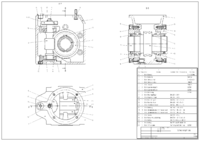
Photo from wikipedia
Abstract For over half a century space exploration has been dominated by engineering and technology driven practices. This paradigm leaves limited room for art and design. Yet in other parts… Click to show full abstract
Abstract For over half a century space exploration has been dominated by engineering and technology driven practices. This paradigm leaves limited room for art and design. Yet in other parts of our lives, art and design play important roles: they stimulate new ideas and connect people to their experiences and to each other at a deeper level, while affecting our worldview as we evolve our cognitive models. We develop these models through circular conversations with our environment, through perception and making sense through our sensory systems and responding back through language and interactions. Artists and designers create artifacts through conversation cycles of sense-giving and sense-making, thus increasing variety in the world in the form of evolving messages. Each message becomes information when the observer decodes it, through multiple sense-making and re-sampling cycles. The messages form triggers to the cognitive state of the observer. Having a shared key between the artist/designer and the observer—for example, in the form of language, gestures, and artistic/design styles—is fundamental to encode and decode the information, in conversations. Art, design, science, and engineering, are all creative practices. Yet, they often speak different languages, where some parts may correspond, while others address a different variety in a cybernetic sense. These specialized languages within disciplines streamline communications, but limit variety. Thus, different languages between disciplines may introduce communication blocks. Nevertheless, these differences are desired as they add variety to the interactions, and could lead to novel discourses and possibilities. We may dissolve communication blocks through the introduction of boundary objects in the intersection of multiple disciplines. Boundary objects can ground ideas and bridge language diversity across disciplines. These artifacts are created to facilitate circular cybernetic conversations, supporting convergence towards common shared languages between the actors. The shared language can also create new variety that evolves through conversations between the participants. Misunderstandings through conversations can also lead to new ideas, as they stimulate questions and may suggest novel solutions. In this paper we propose new categorizations for boundary objects, drawn from design and cybernetic approaches. We evidence these categories with a number of space-related object examples. Furthermore, we discuss how these boundary objects facilitate communications between diverse audiences, ranging from scientists, and engineers, to artists, designers, and the general public.
Journal Title: Acta Astronautica
Year Published: 2017
Link to full text (if available)
Share on Social Media: Sign Up to like & get
recommendations!